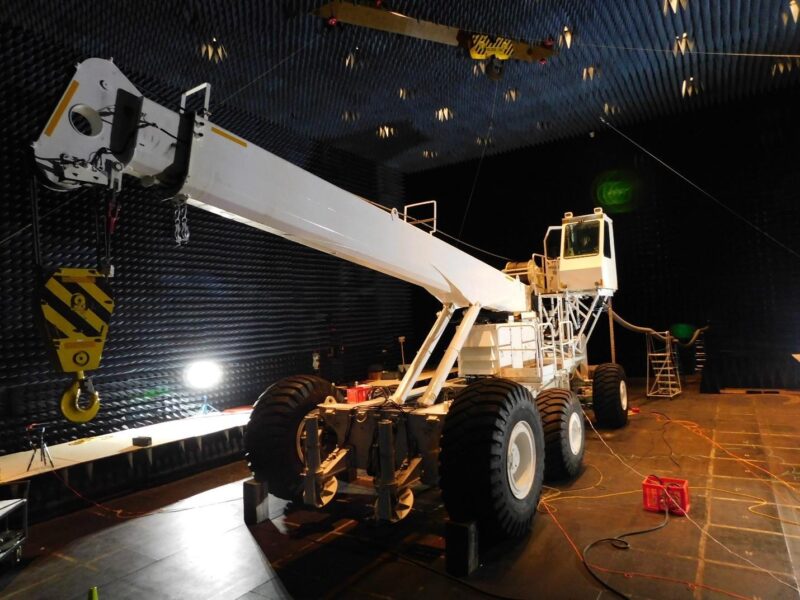
The Navy’s Common Aviation Support Equipment program office (PMA-260) is currently evaluating Electromagnetic Environmental Effects (E3) on a Crash and Salvage Crane (CSC) at the Aircraft Anechoic Test Facility in Patuxent River. (U.S. Navy Photo)
The Navy’s Common Aviation Support Equipment program office (PMA-260) is currently evaluating Electromagnetic Environmental Effects (E3) on a Crash and Salvage Crane (CSC) at the Aircraft Anechoic Test Facility in Patuxent River.
Electromagnetic waves within the Radio Frequency (RF) spectrum are used for communication, radar and information networks aboard ships. The E3 evaluation currently underway in the Aircraft Anechoic Test Facility will determine the CSC’s compatibility with the RF environment.
RF cannot be seen or felt, but it can negatively affect other electrical systems if those systems are not properly protected. Testing will determine if the CSC has an appropriate level of emissions, can withstand a general level of radiation across the whole RF spectrum, and can withstand high levels of radiation tailored to frequencies in its operational environment.
“The new amphibious and carrier CSC designs will ensure the warfighter has the safest, most modern and reliable equipment possible for years to come,” said Jim Choflet, PMA-260 Crash Crane team lead.
CSCs are critical pieces of equipment because no flight operations are allowed on ships without an operational CSC running on standby. They are used for lifting and moving disabled aircraft on carriers and landing helicopter dock flight decks. The new version, designed by industry partner Allied Systems Company, replaces the legacy carrier and amphibious assault crash cranes.
The legacy CSCs were designed decades ago and have been a workhorse in the fleet for many years, having exceeded their anticipated life expectancy. They have become increasingly difficult to maintain due to obsolescence issues.
The carrier CSC (CCSC) and the amphibious CSC (ACSC) variants are very similar. The CCSC has a heavier counterweight than the ACSC, and the lighter ACSC has beams within the width of the crane that increase its stability. The similar designs, along with the new electronic controls greatly simplify maintenance over the legacy cranes.
About PMA-260 – The Navy’s Common Aviation Support Equipment program office (PMA-260) manages the procurement, development and fielding of common aviation support equipment required for the operation and maintenance of aircraft, aircraft weapons, related aircraft weapons subsystems, and miscellaneous ground support equipment. Additionally, PMA-260 manages the Metrology and Calibration program, the Foreign Object Damage mitigation effort, and the mobile facilities used to support Navy Expeditionary and Marine Aviation Logistics Squadron intermediate-level maintenance.

The Navy’s Common Aviation Support Equipment program office (PMA-260) is currently evaluating Electromagnetic Environmental Effects (E3) on a Crash and Salvage Crane (CSC) at the Aircraft Anechoic Test Facility in Patuxent River. (U.S. Navy Photo)


